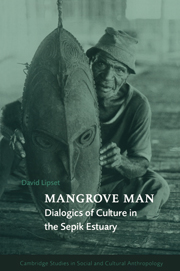Book contents
- Frontmatter
- Contents
- List of illustrations
- List of tables
- Acknowledgments
- 1 Introduction
- PART I DIALOGICS OF THE MATERNAL SCHEMA AND THE UTERINE BODY
- PART II DIALOGICS OF THE MATERNAL SCHEMA AND THE COSMIC BODY OF MAN
- PART III DIALOGICS OF THE MATERNAL SCHEMA IN SOCIAL CONTROL
- 8 Conflict and the reproduction of society
- 9 Social control and law
- Glossary
- Notes
- References
- Index
- Cambridge Studies in Social and Cultural Anthropology
8 - Conflict and the reproduction of society
Published online by Cambridge University Press: 05 June 2012
- Frontmatter
- Contents
- List of illustrations
- List of tables
- Acknowledgments
- 1 Introduction
- PART I DIALOGICS OF THE MATERNAL SCHEMA AND THE UTERINE BODY
- PART II DIALOGICS OF THE MATERNAL SCHEMA AND THE COSMIC BODY OF MAN
- PART III DIALOGICS OF THE MATERNAL SCHEMA IN SOCIAL CONTROL
- 8 Conflict and the reproduction of society
- 9 Social control and law
- Glossary
- Notes
- References
- Index
- Cambridge Studies in Social and Cultural Anthropology
Summary
While Barlow and I were stuck in Wewak town, waiting for the monsoon winds to subside during the first months of 1981, the kind of escalating pattern of conflict which Bateson called “symmetrical schismogenesis” (1936: 177) was taking place between the villages of Darapap and Mendam (see Chapters 1 and 2). By the time we finally managed to arrange for transport, the first indication that there was a moral crisis going on among these two eastern Murik communities presented itself the moment we reached Darapap late in the afternoon of March 2.
A long train of youths led us across a slick, muddy tide-flat to the empty house where we were to stay. On the way, a middle-aged man rushed up and enthusiastically introduced himself as Kaibong. We could not fail to notice the bloody, still coagulating, gash squarely in the middle of his forehead, just above his eyes.
A few hours later, the story of this man's injury began to come out. Luke, then a man of about thirty, came and told us about what had happened. There had been four fistfights. The first had broken out during a soccer match between the respective Sports Clubs of Darapap and Mendam. Kaibong had been hit from behind with a spark plug. But, Luke assured Barlow and me, Darapap people were not dangerous “like Highlanders.”
- Type
- Chapter
- Information
- Mangrove ManDialogics of Culture in the Sepik Estuary, pp. 217 - 263Publisher: Cambridge University PressPrint publication year: 1997

